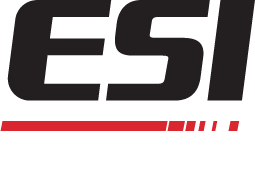EB VS UV Safety
EB VS UV: Safety
It’s no secret that EB and UV technologies have solidified their standing within the packaging industry because of the inherent advantages over solvent and waterbased technologies. The rapid growth in energybased curing applications is a result of its ability to reduce waste and environmental hazards. While EB technology has seen swift growth into one of the leading choices of the flexible packaging industry, like any other industrial technology, safe use requires an understanding of the potential hazards, knowledge of safe handling procedures and industrial best hygiene practices.
Potential Hazards of EB and UV
EB and UV curing materials are generally less hazardous than most solvents in the work environment but despite this, there are still misconceptions about the safety of the materials and equipment used in EB and UV curing. To avoid potentially blocking the adoption of this powerful compliance technology, understanding the fundamental differences is key.
Since UV technology uses lamps that produce significant short wavelength UV output in printing and packaging applications, exposure to wavelengths below 325 nm may result in skin and eye damage. Symptoms typically resemble those of a sunburn: erythema (redness), dryness, wrinkling, and darkening. Eye damage will result in inflammation, pain, photophobia, tearing, temporary blindness and possibly cataracts.
The inherent safety hazards are much less prevalent with ebeam technology, because of the electrons’ finite ability to penetrate. The main safety hazard to be cognizant of is possible leakage of high-velocity electrons and xrays from the curing station. The secondary xrays that are generated when electrons react with matter can cause xray burns, so strict measures should be taken to eliminate this possibility.
How to Protect Your Workers
UV hazards can easily be minimized with simple engineering, administrative and hygiene controls. Curing equipment is provided with interlocked shielding to minimize escape of UV light into the workplace and in most cases, you will not require special personal protective equipment, other than the standard recommendation in packing and printing plant environments. Additionally, you can further minimize the risk of dermatitis by choosing the right lamp to surround the bulb mercury lamps operate at very high temperatures.
EB installations typically come selfshielded. The shielding is interlocked and engineering controls are included to assure the electron beam is directed only at the target area, and that x-rays and stray electrons are minimized. The unit is provided with a radiation detector which automatically shuts down the power if xrays are detected and to prevent any leakage of electrons or xrays into the work environment. Most electron beam curing equipment is installed under manufacturer supervision and will include a person trained as a Radiation Safety Officer (RSO). Regular radiation surveys are typically completed for continuous monitoring of the unit.
Industrial Hygiene Practices
It is important to remember that UV/EB curing materials don’t evaporate, so spills and incidental contamination will remain until cleaned up. Work areas should be kept clean, and all equipment and tools soiled with EB curing materials should be thoroughly clean. Equipment touched with contaminated gloves can be the source of exposure if later touched with unprotected skin.
Conclusion
Earlier concerns with electron beam technology were a result of inexperience and mishandling of acrylates, consequently resulting in cases of occupational dermatitis. But EB technology has seen swift advances in its technology, making it less hazardous, easier to control and generally more safe to use over traditional solvents. If you are ready to learn how Electron Beam technology can help your business be more environmentally and safety conscious, contact us today.

